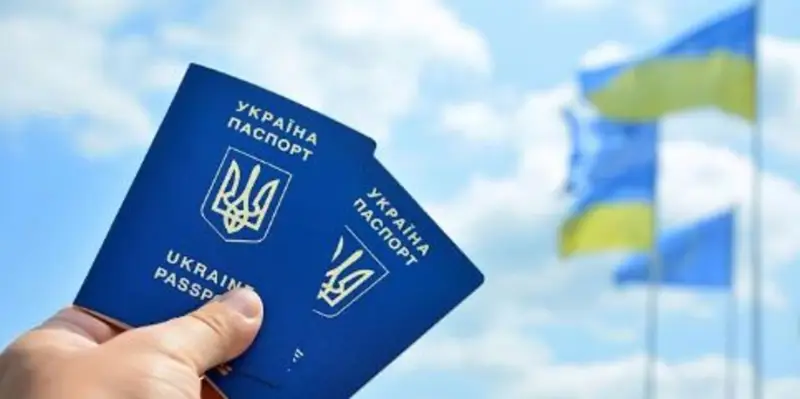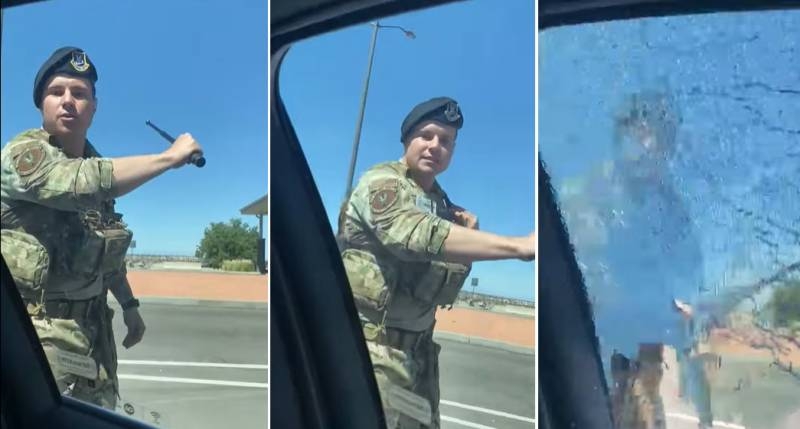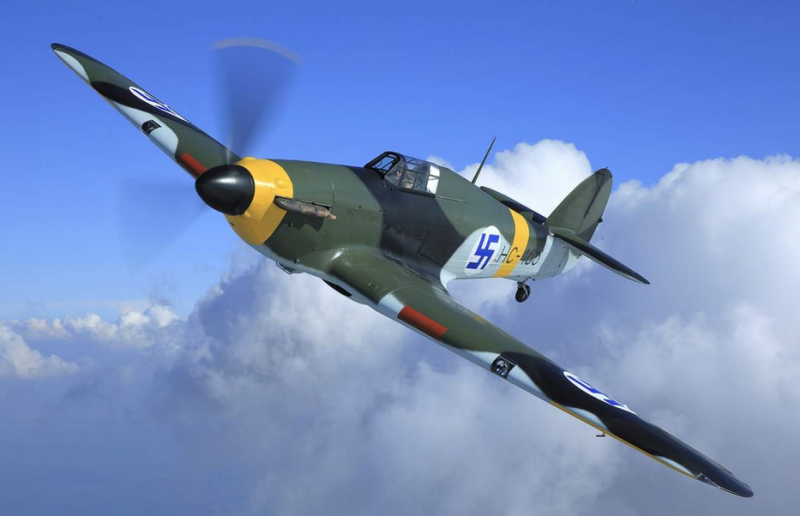
Finnish Air Force was officially formed 4 May 1928 of the year. Around the same time there were ground defense units. AT 1939 year, to the beginning of the Winter War, the qualitative and quantitative composition of the Air Force of the Finns did not go to any comparison with Soviet capabilities. Finnish anti-aircraft artillery was relatively modern, although and small.
On the part of Red Army Air Force in the company was attended by about 2500 Flight, Finland in the beginning of the war could expose only 114 combat aircraft. Despite, that the Soviet air superiority was overwhelming, Finns were able to have a stiff resistance. In this they had the help of many serious country, which supplied combat aircraft. Also in the Finnish Air Force pilots fought many foreign volunteers.
Finnish Air Force main fighter in the initial period of the war was the Fokker D.XXI. this aircraft, It made its first flight in 1936 year, It has been specifically designed for the protection of the Dutch colonies in Asia. Fighter air-cooled engine power Mercury VIII 830 HP. developed in horizontal flight speed 460 kmh. Most of the Finnish armament of fighters of this type consist of four 7,92 mm M36 machine guns FN-Browning.
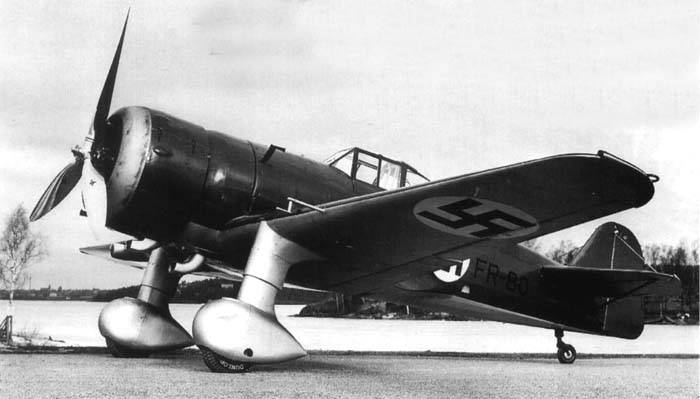
Finnish Air Force Fokker D.XXI
According to reference data, at the time of the outbreak of hostilities at the disposal of the Finns had 41 "Fokker". these fighters, despite the relatively weak armament, They performed well in combat. So, according to Finnish sources, 6 January 1940 the couple "Fokker" in a dogfight shot down 7 bomber DB-3, flying without fighter cover. Of course, imagine a very difficult, according to Western historians, on Soviet bombers lacked defensive armament. "Fokkers" mainly used as part of the 24 th Air Group (LLv-24). Until the end of hostilities in March 1940 year, this air unit lost 12 fighters. In the ranks there were 22 "Fokker", yet 4 car is being repaired.
Finnish command banned its pilots unless it is absolutely necessary to engage in aerial combat with Soviet fighters, since the last-16 series were superior in speed and armament of fighters Dutch production. Yes and, it would seem, outdated bis-15 and I-153 were difficult opponent. experienced pilots, flying in biplanes Polikarpov design, cornering quickly sat down on the tail "Fokker". Nevertheless, Fokker D.XXI operated in the Finnish Air Force until the early 50-ies.
In addition to Fokker D.XXI the beginning of the conflict in the country had Suomi 15 Biplane fighter British made Bristol Bulldog Mk. VAT. "Bulldog", who had gone into production in 1930 year, to 1939 year, certainly, outdated.
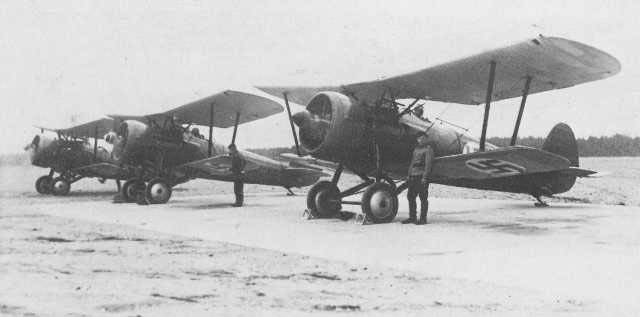
Fighters Bristol Bulldog Mk. IVA Finnish Air Force
Fighter with a maximum weight vzlotnym 1590 kg and an engine air cooling capacity Bristol Jupiter 440 HP. developed 287 kmh. Armament consisted of two machine guns 7,7 mm.
Despite modest, flight data, pilots, flying the "Bulldog", They managed to shoot down a much more modern car. According to again Finnish data, "Bulldogs" received 6 wins, losing one of his fighter. Among them downed aircraft featured the Security Council and I-16. Nevertheless, the chances of these fighters in air combat was a little, and were used mainly for training purposes.
After the armed conflict with the USSR entered into an active phase, military aid to Finland had many states. So, UK government sanctioned the supply of 30 fighters Gloster Gladiator Mk II, French sent the same number of Morane-Solnier MS406, Italy 10 Fiat G.50. The biggest party of fighters was delivered by the United States - 44 Brewster 239.
As for the British fighter "Gloster Gladiator", then the biplane had become obsolete by the time the service in 1937 year. The last fighter biplane RAF scheme at a height 4000 meters could develop speed 407 kmh. armament - 4 caliber machine gun 7,7 mm. Despite, that was non-retractable landing gear, pilot sat in a closed cabin. It was important when operating under conditions of negative temperatures.
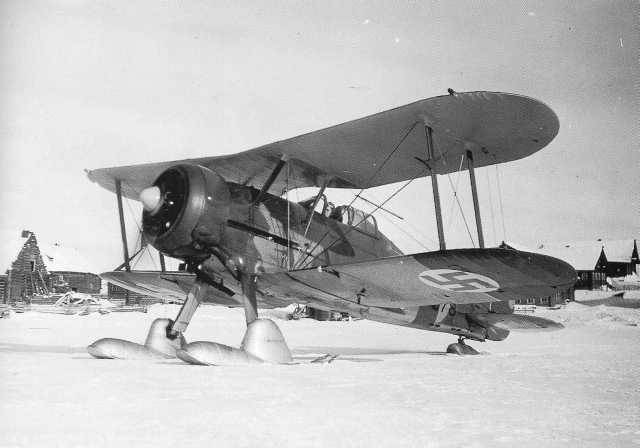
Gloster Gladiator Mk II Finnish Air Force
The bulk of the "Gladiator" was delivered from England, but as it became known later, in the Winter War was attended by Swedish Air Force fighter jets, nosshie Finnish markings. They ruled the Swedes, is a career military, go to war as a volunteer. Swedish "Gladiator" was shot down eight Soviet aircraft.
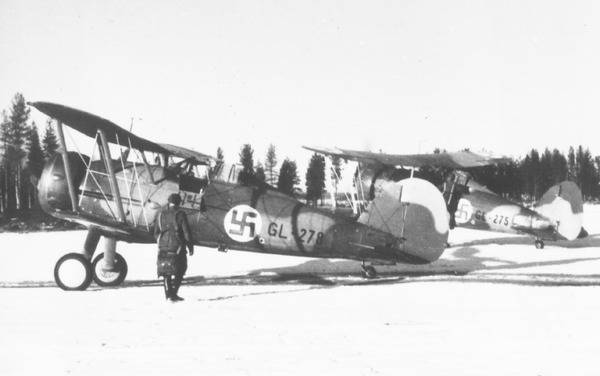
The first sortie on "Gladiator" was held 2 February 1940 of the year. This type fighters performed well in the battle. Their pilots claimed to 45 Air Ratio on loss 12 machines. Using the "gladiators" in the Finnish Air Force for combat purposes continued until 1943 of the year. The last aerial victory on a fighter of this type won 15 February 1943 of the year, when Lieutenant Hakan Stromberg during a reconnaissance along the Murmansk Railway knocked connected P-5.
Compared with the British Gloster Gladiator, French Morane-Solnier MS406 aircraft seemed of another generation. This is partly because it was, Although these fighters appeared almost simultaneously.
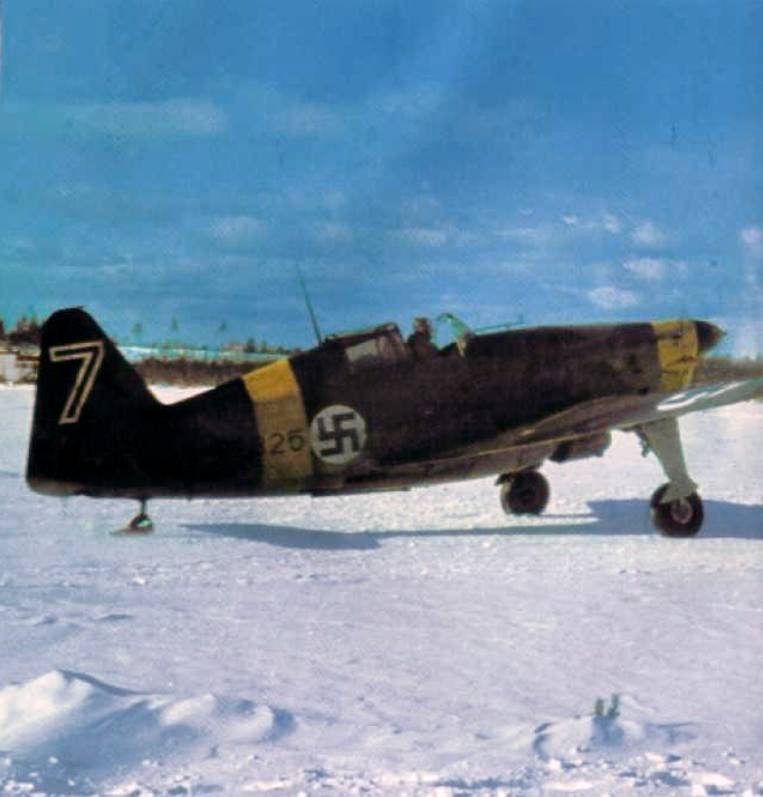
Morane-Solnier MS406 Finnish Air Force
It was a monoplane with low-wing, retractable landing gear and the engine cooling liquid Hispano-Suiza 12Y-31 power 860 HP. On high 5000 m "Moran" developed 486 kmh. The fighter had a very strong end to the 30-ies of arms - 20 mm cannon Hispano-Suiza HS.404 and two 7,5 mm pulemjota MAC 1934. In the capable hands of these fighters is a bigger threat. According to Western sources, in "morality" committed during the Winter War 259 sorties, knocking 16 Soviet aircraft.
After the fall of France, the Germans gave the Finns captured "morality" and spare parts for them. Since the French aircraft could not compete on equal terms with the Soviet fighters new types, in Finland they have tried to modernize. On the "morality" in the beginning 1943 Year established trophy engine M-105 output 1100 HP, new hood and adjustable screw. The speed at the same time increased to 525 kmh. Changed the composition of weapons: Now the collapse of the cylinders of the engine mounted German 15/20 bikalibernuyu mm cannons MG 151/20 and 12,7 Soviet mm machine guns BS. This variant is known in Finland as "Lugg-Moran". However, to carry out re-engine all "Moran" failed due to a shortage of engines. Fighters have actively participated in the fighting, Finnish pilots, letavshie of "Morante», pretend to 118 downed Soviet aircraft with loss 15 their cars. At the end of the fighting in the ranks was 41 aircraft, which operated in the educational and training purposes to 1952 of the year.
At the end 1939 of the year, even before the outbreak of hostilities, Finland ordered 35 Italian fighter Fiat G.50. first 10 aircraft were to be delivered by February 1940 of the year, and a group of Finnish pilots held a 10-hour training course at the factory airfield in Turin, Fiat Aviazione.
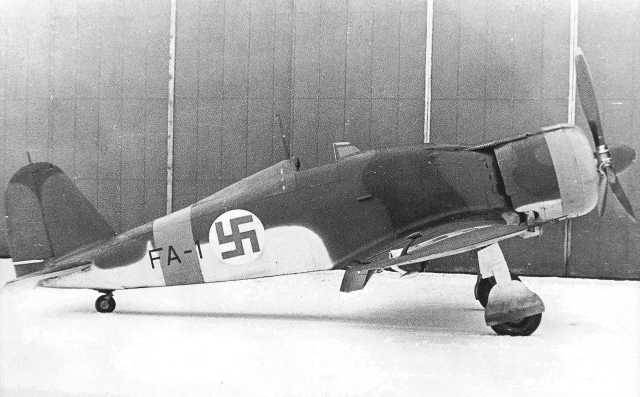
Fiat G.50 Finnish Air Force
Fiat G.50, put into service in 1938 year, It was the first serial-Italian fighter monoplane with retractable landing gear. The star 14-cylinder air-cooled engine power Fiat A.74 RC38 870 HP. on high 3000 meters clocked "Fiat" to 472 kmh. Armament consisted of two machine guns Breda-Safat caliber 12,7 mm.
Despite the accelerated training of flight and technical personnel and boost delivery, fighters Italian production did not manage to really take part in the Winter War. Observers noted sorties "Fiat" in the Vyborg district in February-March 1940 of the year. At the beginning of operation of at least two fighters were defeated because of poor training of pilots. Utti airfield basing repeatedly bombed, and stay there became too dangerous. Therefore, the fighters were moved on the ice of Lake Vesijärvi.
"Fiat", set in 1940 year, We had an open cockpit, that did not add to their popularity when flying in winter. Nevertheless, the pilots announced 18 downed Soviet aircraft. These were mainly bomber SB and DB-3 and I-153 biplane. for loss of property data are different, often says, that the Finnish Air Force lost five "Fiat". How many of them were killed in air battles, not known.
Finest hour "Fiat" has come in the summer 1941 of the year, when the pilots of these fighters demonstrated the highest winning percentage in the Finnish Air Force, declared before the end of the year 52 Victory at the loss of only one of its aircraft. Total February 1940 to September 1944 of the year, Finnish data according to the official, G.50 pilots shot down 99 enemy aircraft. As seen, the bulk of the air victories Finns came in the most difficult period for the USSR. As you gain by Soviet pilots of combat experience and proceeds to drill regiments of new types of combat aircraft, Finnish Air Force success plummeted. Already in 1942 , the Fiat G.50 could not compete on equal terms with the Soviet "Yak" and "Lugg", and to 1944 , this gap has widened even more. But due to the shortage of combat aircraft, despite heavy wear, 10-12 "Fiat" rose into the air until the armistice with the Soviet Union. Unlike the French Morane-Solnier MS406, no attempt was made to modernize the Fiat G.50. The last fighter of this type of officially written off in the first half 1946 of the year.
American-made fighter Brewster 239 It was the most numerous type, ordered by Finns in the Winter War. a contract worth $ 3,4 million was signed with the United States 16 December 1939 of the year. besides 44 fighters, Americans are committed to supply spare engines, parts and weapons package. As in the US, these cars were originally intended for deployment on aircraft carriers, with fighters removed the special takeoff and landing device and life rafts, slightly reduced the take-off weight.
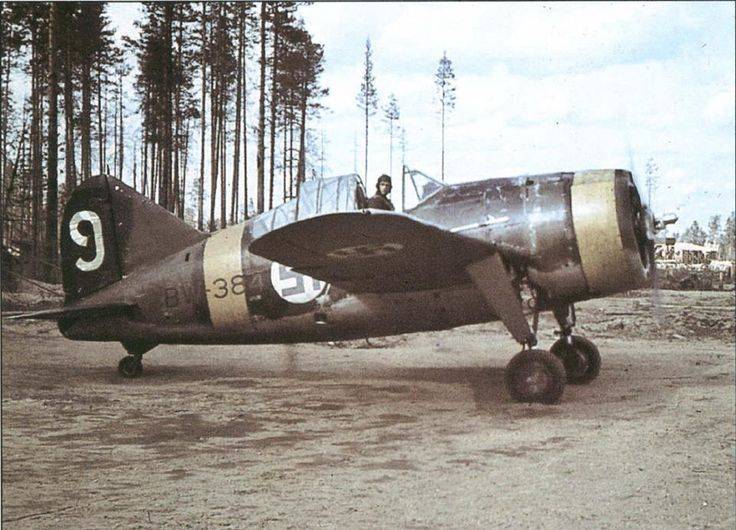
Brewster 239 Finnish Air Force
Aircraft, known in the US Navy as the Brewster F2A Buffalo, adopted in 1939 year. It was one of the first American fighter monoplane with retractable landing gear. In Finland supplied modification with nine-cylinder air-cooled Wright R-1820-G5 Cyclone power 950 HP. Aircraft with weight vzlotnym 2640 kg, on high 4700 developed a speed meter 478 kmh. Arms were powerful enough - 4 caliber 12,7 mm machine gun M2 Browning. At that time, "Buffalo" was one of the strongest fighters.
The first "Brewster" arrived in Finland in February 1940 of the year. aircraft assembly, delivered by sea to Norway, and then by rail to Sweden, It was conducted on the SAAB factory in Gothenburg. The first five fighters reached the alert until the end of the war, but the fighting did not participate. In fighter aircraft and additionally installed bronespinki sights Finnish production.
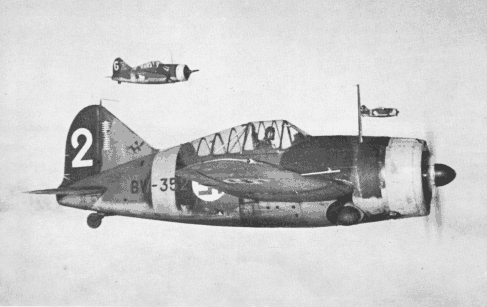
The first combat "Brewster" baptism took 25 June 1941 of the year. According to Finnish sources, the day a couple of fighters clashed with 27 SB bombers over the Turks and allegedly shot down 5 Soviet aircraft, without incurring losses. At all, in the Finnish Air Force Does not the type of fighter is considered to be almost successful. He was appreciated not only for good, flight data, but also for reliability. Initially, there were problems with the reliability of the engine, but Finnish engineers managed to eliminate all problems. The disadvantage of a fighter considered neprotektirovannye fuel tanks, Besides, in some cases, "Brewster" confused with the Soviet-16. During the war in Finland attempt was made to copy Brewster 239, but the work was delayed, and in the end, after the start of deliveries in 1943 , the German Messerschmitt Bf 109G closed this topic.
As the Finns say, for three years 25 June 1941 of the year, by 17 June 1944 , the pilots of the 24th Fighter Air Group, flying the "Brewster" was shot down 477 Soviet aircraft, losing battle 19 their cars. After Finland signed an armistice with the Soviet Union in September 1944 of the year, Finnish fighters scrambled to intercept German planes. So, 3 October 1944 , was shot down Ju 87, invading Finnish airspace, but such cases are single. Active service Brewster 239 in the Finnish Air Force continued until September 1948 of the year. The last aircraft was sent for scrap in 1953 year.
At the beginning 1940 , Finland purchased 12 British fighter Hawker Hurricane Mk I. However, they were unable to participate in the Winter War. Furthermore, Finland got up to only ten cars: two aircraft were lost during the haul.
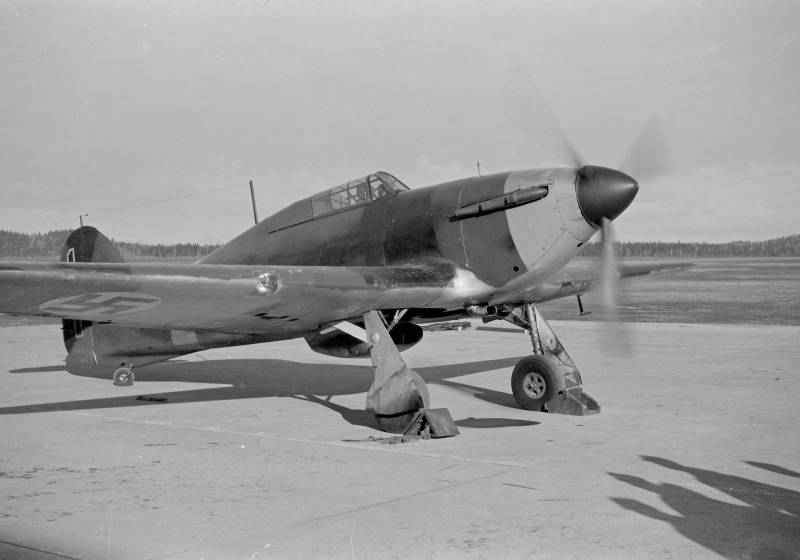
Finnish Hawker Hurricane Mk I
the, that the UK government, in a state of war with Germany, despite the acute need for modern fighters, authorized the sale of combat aircraft, said the intention to draw the Soviet Union into a protracted military conflict.
For his "Hurricane" time was quite high lotnymi data, its mass production began in the late 1937 of the year. Hawker Hurricane Mk I was equipped engine Rolls-Royce Merlin II power 1030 l. from. Maximum speed - 540 kmh. weaponry – eight 7,7 mm machine guns Browning .303 Mk II.
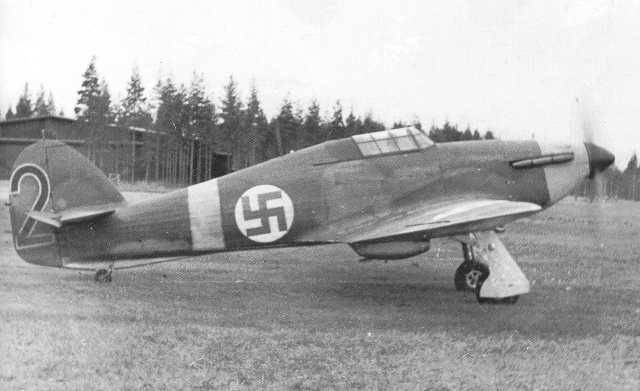
Finnish "Hurricane" entered the fray in late June 1941 of the year, but during the fighting were used fairly limited, due to lack of spare parts. spring 1942 year came in the form of replenishment of captured Soviet Hurricane Mk II. The aircraft in February 1942 year made an emergency landing on the ice and was rebuilt Topozero. In two other donors as Soviet "Hurricane" were used, flopping down on his belly in the Finnish rear.
AT 1943 flights by "Hurricane" virtually ceased, even though they were listed in the battle of the Finnish Air Force. According to Finnish data, on account of these fighters 5 aerial victories. Five Finnish "Hurricane" were lost in air combat, two more were victims of Soviet anti-aircraft artillery. Last time "Hurricane" Finnish Air Force flew 31 May 1944 of the year.
If you believe the Western historians, during the Winter War on the territory of, controlled by Finnish troops, makes emergency landing 25 Soviet aircraft. The airfield was returned state 5 I-15 bis, 8 I-153 and 1 I-16. Information about, that these machines made sorties, no. Likely, they were used for training purposes and for the organization of mock fighting. Repair trophy aircraft carried out in state aviation enterprise Valtion lentokonetehdas. Engines and other items were taken from the aircraft, which considered it inappropriate to recovery.
As can be seen from the above, during an armed confrontation with the Soviet Union in the winter 1939-1940 gg. Finnish Air Force combat capability maintained only at the expense of foreign supplies. On the Finnish side of the pilots from Britain fought during the Winter War, Poland, USA, Sweden, Norway, Denmark and Italy. From abroad to Finland during the Winter War, according to Western data, delivered 225 combat aircraft. At the same time the Air Force fighters and bombers "neutral" Sweden, Fly to the conflict with the Finnish identification marks, this number is not included, since after the war, have returned with their crews at home. Thanks to foreign military assistance, Finnish Air Force 1 April 1940 of the year, despite the loss, numbered 196 combat aircraft, ie more, than before the conflict. The same applies to the supply of aviation gasoline and oil, lubricants for the combat aircraft delivered mainly from Sweden.
According to Finnish data, at 493 air battles shot down 293 Soviet aircraft, while the Finnish anti-aircraft gunners claimed another 330 downed aircraft. Finns recognize, that lost the fighting 67 their cars. It was seriously injured 69 Flight. During the fighting killed 304 Finnish aviator, 90 missing, 105 – wounded. But take into account whether it is not known at this loss of many foreign volunteers. In turn, the domestic sources are data, which fundamentally differ from the Finnish. So, in the book VS. Shumikhina "Soviet military aviation 1917 - 1941, "says, that combat losses amounted to 261 aircraft and 321 aviator. Soviet pilots and gunners claimed the destruction of 362 enemy aircraft. On this basis, we can say unambiguously, that the parties overestimated the enemy's losses more than doubled.
Most of the foreign military observers, present in Finland in winter 1939-1940 years, noted violent conduct air battles. Finnish pilots, sitting in the cockpits of the few in comparison with the Red Army Air Force fighters, We are doing everything possible, in order to prevent Soviet bombers to their own objects. cases of, when the Finns were in a desperate situation to ram. Soviet pilots considered the Finnish pilots strong and very dangerous opponent. At the same time the Finnish command did everything to avoid losses. Fighter pilots were forbidden to engage in combat with Soviet fighters without urgent need. A significant number of victories in a number of Finnish aces accounts due not only to high personal mastery, but also the tactics of "hit and run". And also careful planning of air distribution and role of fighting. In some cases, Soviet fighters, attracted by carefree flying and, it would seem, nobody noticing Finnish single-aircraft shot down bait proved a surprise attack by the sun. The weak point of the Finnish military aviation was a big diverse nature, which greatly hampered the training of personnel, repairs, supply of spare parts and ammunition.
To be continued…
Based on materials:
http://www.jaegerplatoon.net/AA_GUNS2.htm
http://www.jaegerplatoon.net/AA_GUNS3.htm
http://www.jaegerplatoon.net/AA_GUNS3.htm#76ItK28
http://www.winterwar.com/forces/FINairdefence.htm
http://www.warrelics.eu/forum/finnish-militaria/hawker-hurricane-finnish-air-force-653845/







